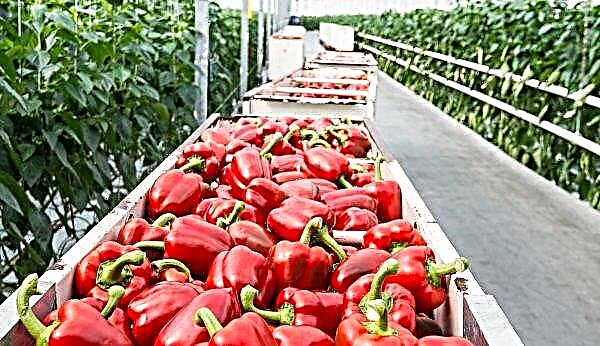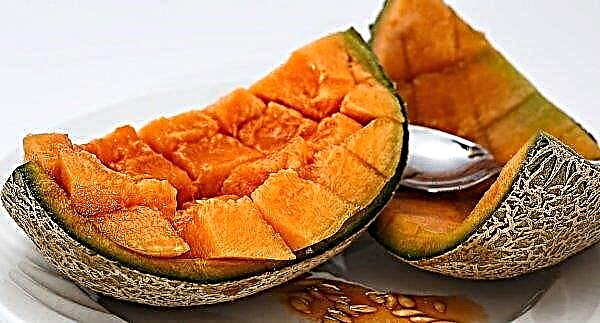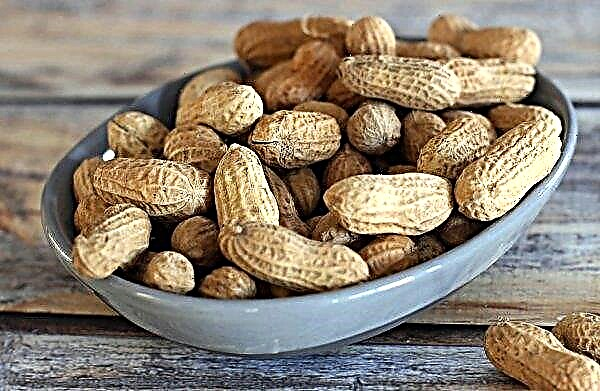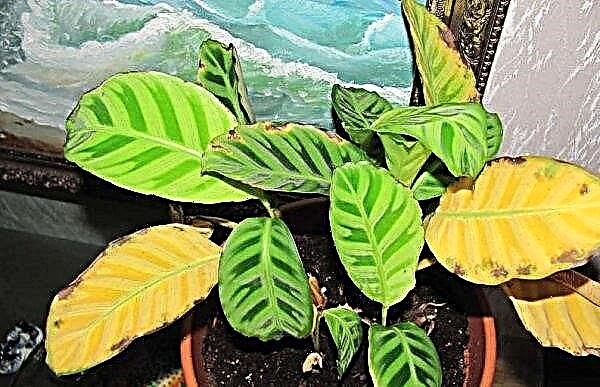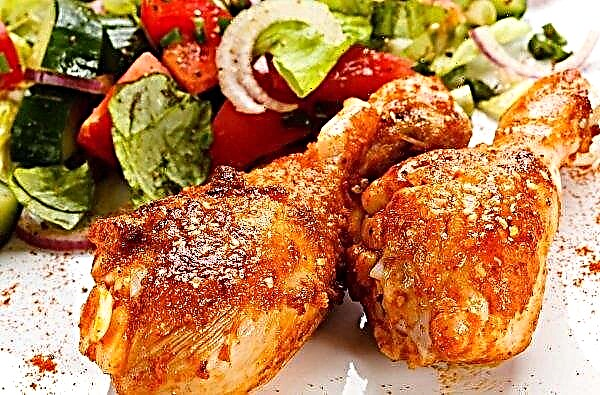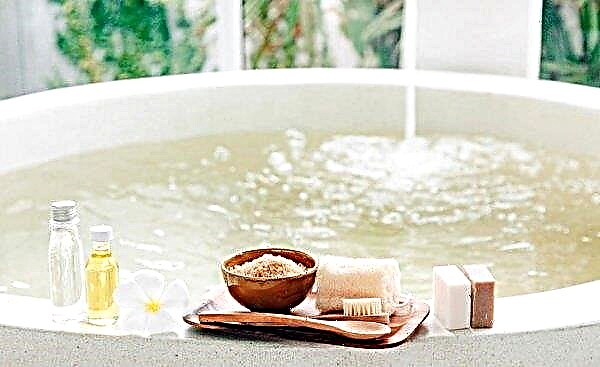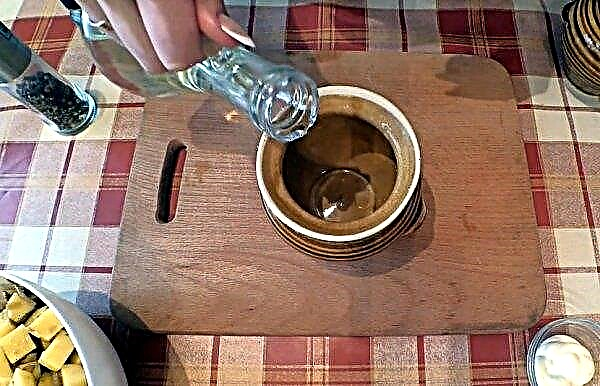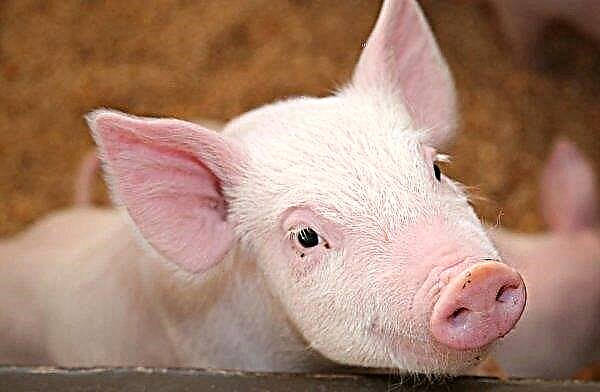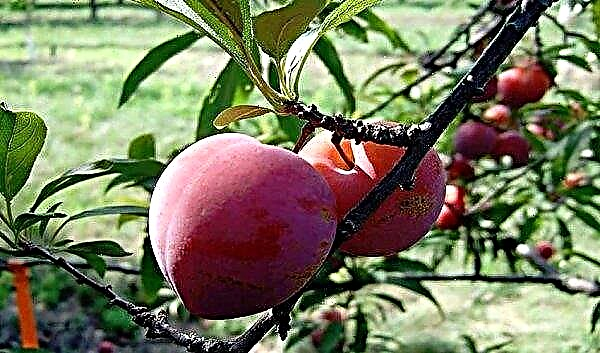Modern agricultural technology and breeding can create amazing plant varieties that did not previously exist. An excellent alligator F1 hybrid cucumber, which delights many with its characteristics, is no exception. About him in more detail - later in the article.
Botanical Description
The early-ripening and high-yielding variety Alligator is resistant to frost and unpretentiousness under difficult growing conditions.
Kustov
The culture has a tall indeterminate bush with powerful climbing and developed root system. The ability to curl along a horizontal or vertical support is high, somewhat reminiscent of a vine. The leaves are medium in size and uniform in green. Petioles have slight pubescence; 1-2 fruits are tied in the internodes of a female plant.
Did you know? The cucumbers that we use as food are unripe, as the ripe fruit becomes stiff, grainy and practically unsuitable for food.
Fruit
Fruits have unique external data that differ from the standard concept of cucumber:
- long cylinder with elongated cones at the edges;
- average tuberosity (and for a thin fetus it is higher than average);
- a small number of spikes;
- small long seeds copying the shape of a vegetable;
- homogeneous light green flesh with a delicate taste.
 Fruits can reach a length of about 45 cm, while having a small diameter (20–25 mm) and a mass of up to 300 g
Fruits can reach a length of about 45 cm, while having a small diameter (20–25 mm) and a mass of up to 300 g
Grade characteristics
Plants, with an average formation of lashes, are powerful, the average shoot length is 2.5 m, and the bush diameter is up to 1.5 m. The variety is selected for use in the Central Black Earth, Central, Northwest, Volga-Vyatka, Middle Volga, North Caucasian and Northern regions. The purpose of the variety is to grow in film unheated greenhouses and greenhouses in summer cottages and farmlands.
Productivity
The fertility of the variety is very high - in good years and subject to the right conditions for care, these cucumbers can bring up to 14-16 kg of fruit per 1 m². Yields are seriously affected not only by growing conditions, but also by proper agricultural technology, rainy weather, winds and other conditions outside the greenhouse.

The timing of flowering and fruit ripening
Flowering occurs 3 weeks after sprouting with large yellow flowers. The first fruits can be harvested already 1.5 months after planting seeds. Early maturity does not lead to a quick spoilage of cucumbers in the garden, but there is no sense in overexposing them, because the delicate taste and flesh become tougher.
Important! The appearance of the fruit often makes the owners leave 1–2 plants for decorative cultivation - the Alligator is somewhat reminiscent of the serpentine lagenaria, which is gaining popularity among gardeners.
Pest and disease resistance
Given the hybridity and modernity of the variety, its creators provided for the influence of pathogens, so the plant is vaccinated against cucumber mosaic and powdery mildew. Any pests and diseases can occur with improper care, especially if you violate the rules of irrigation. Leaf burns are possible, but they are insignificant, since the Alligator is frost-resistant and drought-resistant.

Advantages and disadvantages
- The advantages of this type of cucumber are such indicators:
- high productivity;
- precocity
- excellent taste;
- resistance to frost and drought;
- good external data of fruits;
- power and average compactness of the bush.
- The disadvantages of the variety are also available:
- the possibility of insect damage;
- low suitability for preservation due to the length of the fruit;
- soil depletion by culture.
Video: Alligator - the most productive cucumbers
Planting varieties
To grow the Alligator, well-lit areas are chosen without a high occurrence of groundwater. The plant feels great in the sun in areas of recommended cultivation. It can be cultivated both with the help of seedlings, and in open greenhouses that protect from the wind.
Any cucumbers need loose and soft soil, where they will feel as comfortable as possible. Well-warmed, fertilized and watered soil is suitable for seedlings or seeds to set out faster.
Planting seeds is carried out according to this scheme:
- In the evening before planting, the seeds are soaked in a disinfectant solution (potassium permanganate).
- The beds are fertilized with manure and watered.
- Seeds are planted in a checkerboard pattern (50 × 50 cm).
- The material is deepened 3-4 cm into the ground.
- After planting the beds are watered.
 The scheme of planting cucumbers in a checkerboard pattern
The scheme of planting cucumbers in a checkerboard pattern
Seedlings that were grown in room, balcony or greenhouse conditions are hardened before planting - they are taken out for several hours in the warm time of the day in the open air with an increase in the length of stay there. It is good if it will be under the spring sun and a little breeze. Then young bushes with already grown 2-3 true leaves are planted in watered and fertilized land.

Further care of the cucumber bush
The variety of cucumbers Alligator is unpretentious and does not require any special conditions for growing. It is enough to water and fertilize the plant on time, weed and carry out prophylaxis against pests.
Intensity of watering and top dressing
You need to water the bushes every 2-3 days, and with drought you can arrange daily watering. The temperature of the water should be a few degrees above the temperature of the soil so that the roots do not get too cold. When determining the need for watering, you need to check the dryness of the top soil layer - if it is dry to a depth of 2 cm, then on that day it is definitely necessary to water the bushes. Watering is carried out in the root zone without the formation of swampy puddles.
Fertilize this variety 3 times during its growth according to the following scheme:
- 2-3 weeks after the emergence of seedlings or transplanting seedlings, the plants are sprayed with a solution of urea (15-20 g per bucket of water).
- During the start of flowering, the bushes are sprayed with superphosphate (25-30 g per bucket of water).
- When the first fruits appear, urea is again used.

Soil loosening
Given the high frequency of watering cucumbers, it is necessary to carefully monitor the state of the soil surface, avoiding the formation of a crust. As soon as the earth dries up after the next watering, you need to carefully loosen it in the garden bed or in the root zone - depending on the method of cultivation.
Important! When loosening the root zone, you need to be especially careful not to damage the delicate stems of the bushes with a garden tool.
Weed weeding
Weeds are able to deprive bushes of nutrients and moisture from the soil, so the appearance of any excess plant in the garden must be met with a chopper. In principle, weeds are not particularly active on the cucumber plantation, since branched broad lashes provide little opportunity for the penetration of sunlight and the development of excess plants.
 In any case, it is necessary to check the beds for the presence of weeds, and with weed plants we can mulch the aisles or carefully remove them from the site so that the seeds do not spill
In any case, it is necessary to check the beds for the presence of weeds, and with weed plants we can mulch the aisles or carefully remove them from the site so that the seeds do not spill
Disease and Pest Prevention
As mentioned above, diseases of this hybrid variety are bypassed, but prevention is never superfluous. To strengthen the immunity of the Alligator, it can be treated with the Trichodermin fungicide even before flowering.
Did you know? July 27 is the International Cucumber Day. On this day in Suzdal, on the territory of the Vladimir-Suzdal Museum-Reserve, a cucumber festival is held.
Pests for a variety are more dangerous than diseases. The plant can hit nematode, aphid and spider mite. Stems, leaves, flowers and fruits should be inspected as often as possible for the appearance of these parasites. If small lesions are found, they are washed with soapy water or Bordeaux liquid. If the pests managed to seriously occupy the bush, then it makes sense to treat the entire plantation with insecticides - Aktelik, Aktara, etc. If a spider mite has been discovered, additional treatment with acaricides - Antiklesh, Fufanol can be carried out.

Harvesting and storage
Alligator cucumbers must be collected carefully, screwing down the hanging vegetable with part of the stem. After that, given the length of the fruits, they need to be laid in wooden or plastic boxes, shifting with paper. In this form, the fruits can be transported normally.
These vegetables can not be stored for a long time, and given that the variety is salad, it is better to use them in food and not to undergo processing or long-term storage.
The variety of cucumbers Alligator has wonderful taste and growth characteristics, so it is loved by summer residents, farmers and consumers. Early maturity, frost resistance and drought tolerance allow these greens to grow in areas with a rather harsh climate. And an interesting appearance attracts even children to it.
Network user reviews
ADVANTAGES: Delicious, well laid, suitable for salting
DISADVANTAGES: Prickly)
Good day Friends! We plant alligator cucumbers for a very long time. The characteristics of the variety are on the back of the package. Once we had a greenhouse for cucumbers, now we are planting in open ground. Fortunately, this variety is adapted. Mom planted cucumbers in May, but under light shelter. Since frosts are still possible. The Alligator variety is considered to be ripe, but the weather in the Urals is very unpredictable. And in 2017, we waited for the harvest only in early August. The fruits of the Alligator cucumber are very long. I think they can always grow in length! Therefore, it is necessary to tear out as you grow. Cucumbers-infection is very prickly. But the taste is worth it. The alligator is not bitter, has no voids inside. Sweet pulp is perfect for salad. In addition, this variety is well stored, withstands several days longer compared to other varieties. Although I consider this variety of cucumbers to be salad, they are suitable for salting. You just have to cut them, they will not be included in more than one jar! In general, a great variety, proven over the years! I recommend! Thank you for the attention)


